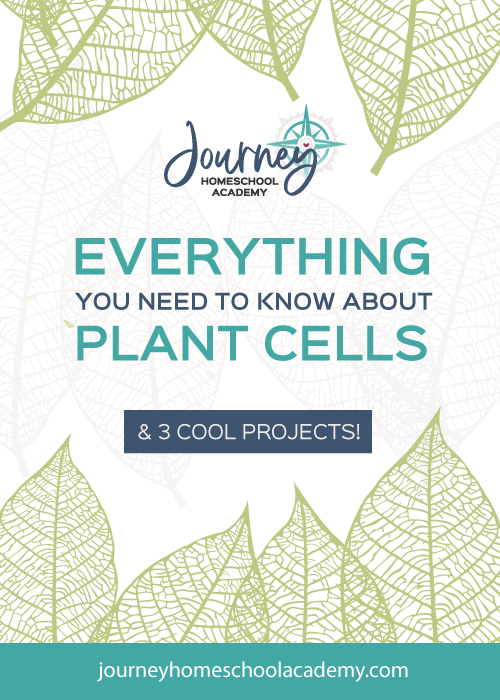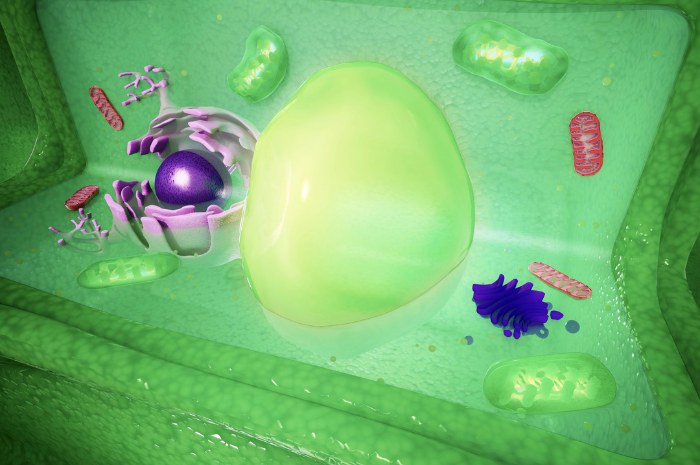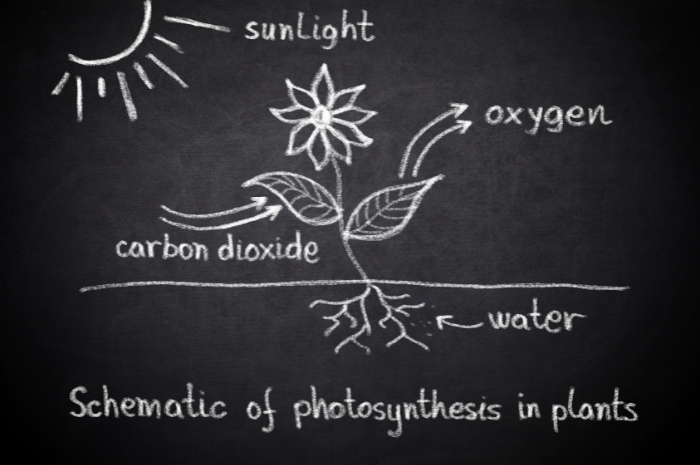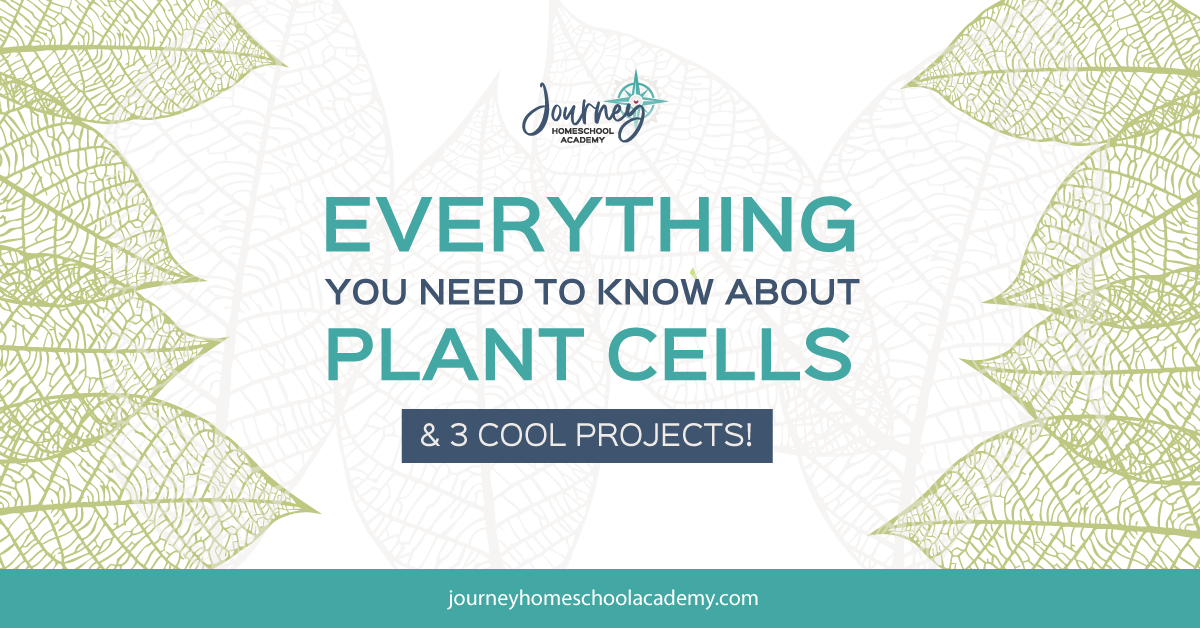Take a moment to look outside and appreciate the beauty of nature. Observe the grass blanketing your yard, the towering trees with their strong branches and trunks, and your flourishing garden filled with nourishing vegetables. All of these wonders of nature owe their existence to plant cells! Just as human cells are the basic building blocks of our bodies, plant cells are the foundation of plant life. Let’s dive into the fascinating world of plant cells, learn about their structure and function, and explore some fun projects to better understand the amazing fields of botany and biology.
Visualizing a plant cell and its functions can be challenging, as we cannot directly observe them with the naked eye. We appreciate the beauty of a whole plant, but the myriad of cells that constitute it remain unseen.

You may be curious about the appearance of plant cells, whether all plant cells are identical, and the mechanisms by which plant cells sustain the life of flowers and grass. Let’s explore these aspects of plant cells, along with some engaging projects to deepen our understanding of botany and biology.
What does a plant cell look like?
At first glance, plant cells might seem like a mystery, as they’re just too tiny to see with the naked eye. But once you peek through a microscope, you’ll discover a world of intricate shapes and structures!
Just like their human and animal counterparts, plant cells are eukaryotic, which means they’re home to little membrane-bound structures called organelles, including a nucleus. Acting as the cell’s command center, the nucleus works alongside other organelles, each playing its own part in helping the plant thrive and grow. How cool is that?

Plant cells have some features that set them apart from animal cells! For starters, they have a cell wall surrounding the cell membrane, providing extra support and structure. They also boast two special organelles: a roomy central vacuole and chloroplasts. Chloroplasts are the stars of photosynthesis, while the central vacuole helps determine if a plant wilts or flourishes! Fun fact: animal cells have vacuoles too, but they’re much smaller compared to those in plant cells.
In addition to the cell wall, cell membrane, nucleus, large central vacuole, and chloroplast, plant cells also have these organelles within each cell:
- Cytoplasm
- Mitochondria
- Amyloplast
- Ribosome
- Golgi apparatus
- Peroxisome
- Nucleolus
- Endoplasmic Reticulum
All of these organelles work together to help a plant grow, feed, bloom, and so much more!

Are all plant cells the same?
Nope! There are different kinds of plant cells that vary based on the structure and function of each cell. Within one plant, there can be multiple types of cells that each play a unique role in the survival of the plant. A few of the most commonly known plant cells are:
- Collenchyma cells
- Sclerenchyma cells
- Parenchyma cells
- Xylem cells
- Phloem cells
Collenchyma cells have thick cell walls that help a plant stay flexible but strong as it grows. If a plant does not have this strength, it won’t grow, so it’s safe to say that collenchyma cells directly aid in plant growth.
In contrast to collenchyma cells, sclerenchyma cells support the part of the plant that is not growing! These cells are actually dead cells that have extremely thick walls, which is why you’ll find sclerenchyma cells in tree bark or matured stems.
Parenchyma cells make up the majority of cells in a plant. As living cells with thin walls, they’re a key part of photosynthesis, in addition to storing organic substances that are used in healing a hurt plant. I like to think of parenchyma cells as the cells that “take action” because of how many processes they’re a part of.
Finally, we have xylem and phloem cells. Both are transport cells. Xylem cells transport water and minerals throughout the plant, while phloem cells transport the nutrients made by photosynthesis. And speaking of photosynthesis…
What is photosynthesis?

Not to be overly dramatic, but without photosynthesis, human life on Earth wouldn’t exist! This process not only feeds the plants that we (and animals) need to eat to survive, but it also releases oxygen that we need for respiration. Here are the steps necessary to complete photosynthesis:
- Chlorophyll in the plant absorbs sunlight (AKA energy!)
- In the meantime, the roots of the plant absorb water from the roots and transport that water to the leaves of the plant.
- Using the energy from the sun, the H2O molecules are divided into hydrogen and oxygen atoms.
- The pores of the plant absorb carbon dioxide (CO2) from the air.
- Chemical reactions pair the hydrogen atoms and CO2 to make glucose that then feeds the entire plant.
- The remaining oxygen atoms are excreted into the air, and humans breathe them in!
This process is SO cool! Photosynthesis helps plants grow while giving us air to breathe. It’s a win-win situation!
Note: For young learners, here’s a super simple video that explains photosynthesis and how important this process is for our life as humans!
3 Cool Plant Cell Project Ideas

To better understand plant cells and the amazing role they play on our earth, here are a few easy but fun plant cell project ideas!
Super Sweet Edible Cell Project
Using treats and candy (every kid’s dream), your student can put together a very magnified model of a plant cell cake, complete with a cell wall, cytoplasm, and all of the other organelles. The ingredient list is a bit long, but the end result will be SO worth it. We recommend checking out your local dollar store for the items needed!
Breathing Leaves Photosynthesis Experiment
Watch photosynthesis in action! You’ll need green leaves and a sunny day to make this happen, but the rest of the materials can be easily found around your house. Students will be able to see the direct effect that sunlight has on plants!
Shrinky Dink Cell Model
Labeling a paper cell model is fun, but labeling a Shrinky Dink with the plant cell parts is quite possibly the most fun! Using a few sheets of Shrinky Dink, your student can even make a human and/or animal cell model and then compare it to their plant cell model!

Ready to learn more about plants and life on Earth?
At Journey Homeschool Academy, we offer an entire homeschool biology course just for elementary students! Experience Biology Elementary tackles the topic of plant cells and photosynthesis while also delving into the entire world of biology, including the animal world! And for high school students, check out Experience Biology High School!
We fully understand that learners of ALL ages need an engaging course outline to enjoy learning. After all, engaged learning will be most effective! That’s why Experience Biology includes video lessons (so many students are visual learners), dozens of hands-on activities, and a reading list full of illustrated age-appropriate books. If your student loves plant cells, they’re sure to love learning more about biology!
